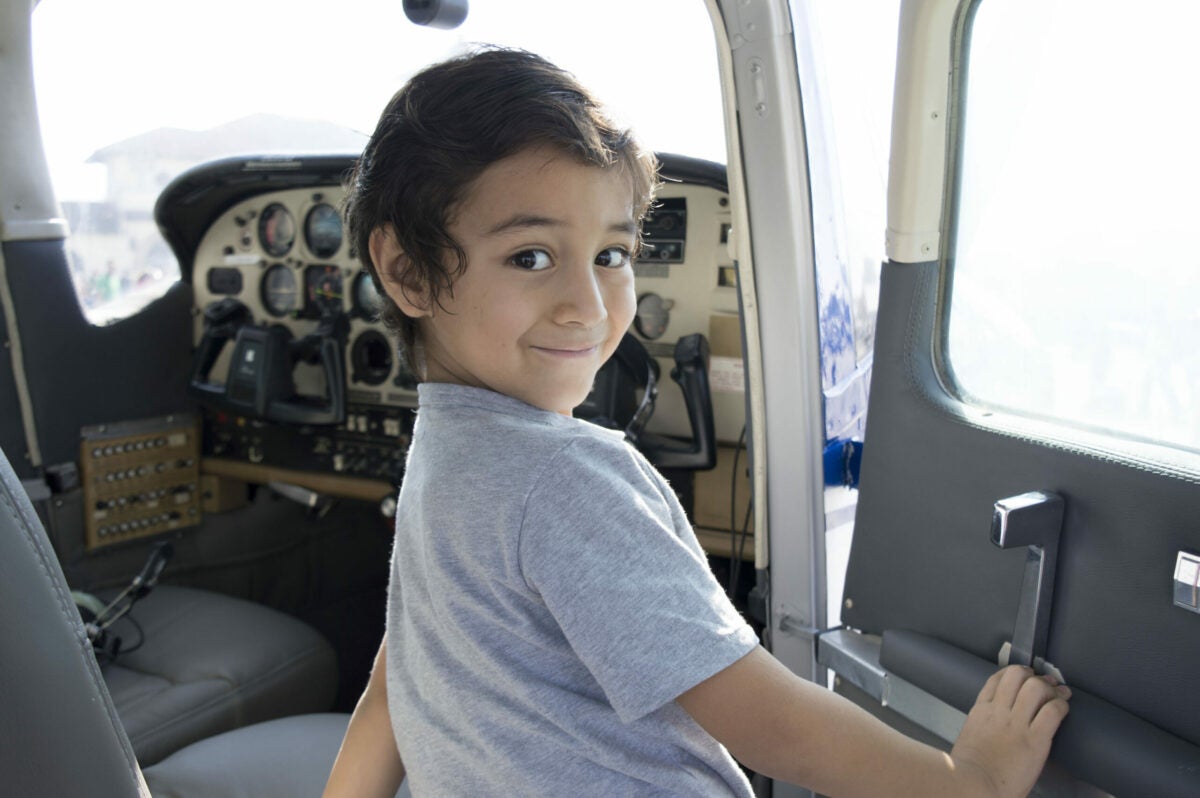One of the first questions I ask a private pilot candidate is, “Who will your first passenger be?” Most often, it is a family member. We talk about the limitation noted in FAR 61.89 that states carriage of passengers is not permitted by student pilots since they cannot legally act as pilot in command (PIC) in an aircraft with passengers. However, during dual lessons the flight instructor is the PIC, therefore, if your aircraft has a back seat, you could legally carry a passenger.
Having a passenger in the back seat gives the learner/pilot the opportunity to practice and apply weight-and-balance calculations and to experience what a heavier airplane feels like. It can be an eye-opening experience.
Many flight schools have a culture that encourages flight students to observe lessons from the back seat. This is a privilege, not a right. Back-seaters, pay close attention to what is happening. Respect the concept of a sterile cockpit on takeoff and landing, and follow directions like “keep your seat belt on, and let us know if you see pertinent traffic.” You can learn a lot by observation.
When I taught at a college, I required my learners to fly a dual lesson with a back-seat observer before I sent them to the stage check with the chief instructor, because he outweighed me by a good 100 pounds. I wanted them to get used to having that extra weight on the right side of the aircraft. The learners who didn’t practice with that extra weight remarked how surprised they were by the way the airplane flew with him on board.
Parent as Passenger
When the learner is a teen, it is not uncommon for them to want their parents to come along on a flight. This is doable as long as the parents respect the boundaries of the teaching environment. They are there to observe. If the parent keeps interrupting the process by asking their child, “Do you understand that?” it becomes disruptive and puts both the learner and instructor in the awkward position of having to ask and/or tell the parent to stop the behavior.
Children in the Back Seat
Sometimes it goes the other way when the parent is the learner, and they put their children in the back seat. Depending on the age and temperament of the child, this can be a good thing—like sharing a learning experience and generating an interest in aviation in a teen—or a bad thing, like when the kids misbehave and distract their parent, or the parent is more interested in getting photos of the kids than doing a flight lesson. More often than not, these “family flights” are a review lesson for the learner. I have noticed that the sound of the engine often lulls the children to sleep, and once that happens, the parent relaxes and learning can take place.
CFIs Need to Ask the Learner
If you are the CFI, ask the learner—the person paying for the flight—if they are OK with having someone in the back seat to observe. Don’t just assume. Some learners will be fine with it. Others will be reluctant. Their reasons vary.
When I was working on my commercial certificate in a Part 61 program, another commercial candidate declined to allow a back-seat observer, unless they agreed to help cover the cost of the flight. He pointed out he was working multiple jobs to pay for his training and didn’t think it was fair to be essentially paying for someone else’s lesson by observation. He took a lot of heat for his position, but he stood firm. As I was also working multiple jobs to pay for training, I understood where he was coming from.
- READ MORE: On Being a Passenger
I thought about this when, as a CFI candidate, I was offered the chance to observe during a night flight. I asked the learner, who was ostensibly paying for the aircraft, if I could contribute to part of the cost. He was mildly uncomfortable with this idea. The FARs did not prohibit this, as they permitted the cost of a flight to be shared. There was discussion. There was haggling. We settled on $20 for gas money and a box of Girl Scout Thin Mints cookies (it was that time of year).
Sometimes you don’t have a choice when it comes to carrying passengers, such as when you are a commercial pilot and getting paid to fly someone someplace in a single engine aircraft, such as doing a scenic flight for your flight school. You are responsible for the safety of the flight, not necessarily the behavior of the passengers, but it is helpful if you give the, gentle warnings about things that could harm them – I mean in addition to showing them how to latch and unlatch the seat belts, where the fire extinguisher is, and how to open the doors and egress the aircraft. I am talking about the dangers of looking through the viewfinder of a camera. It is almost guaranteed to get them airsick, resulting in a condition known as “calling pterodactyls” which often results in the necessary deployment of a receptacle and extended cleaning of the aircraft. Pro-tip: hold the camera at arms length and don’t look through the viewfinder. You’ll thank me for it.
Tips for Managing Passengers
- Remind the passengers that you are PIC.
- Be very clear on the role of the back-seat passenger. They will observe and help look for traffic.
- Take your time with the safety briefing and use the checklist.
- Verify the passengers are wearing seat belts and know how to work the latches.
- Inform your back-seat passenger that if they hear a radio transmission or if your hand goes up, they need to be quiet because that means you need to talk.
- If someone becomes frightened or uncomfortable, be ready to terminate the flight.
